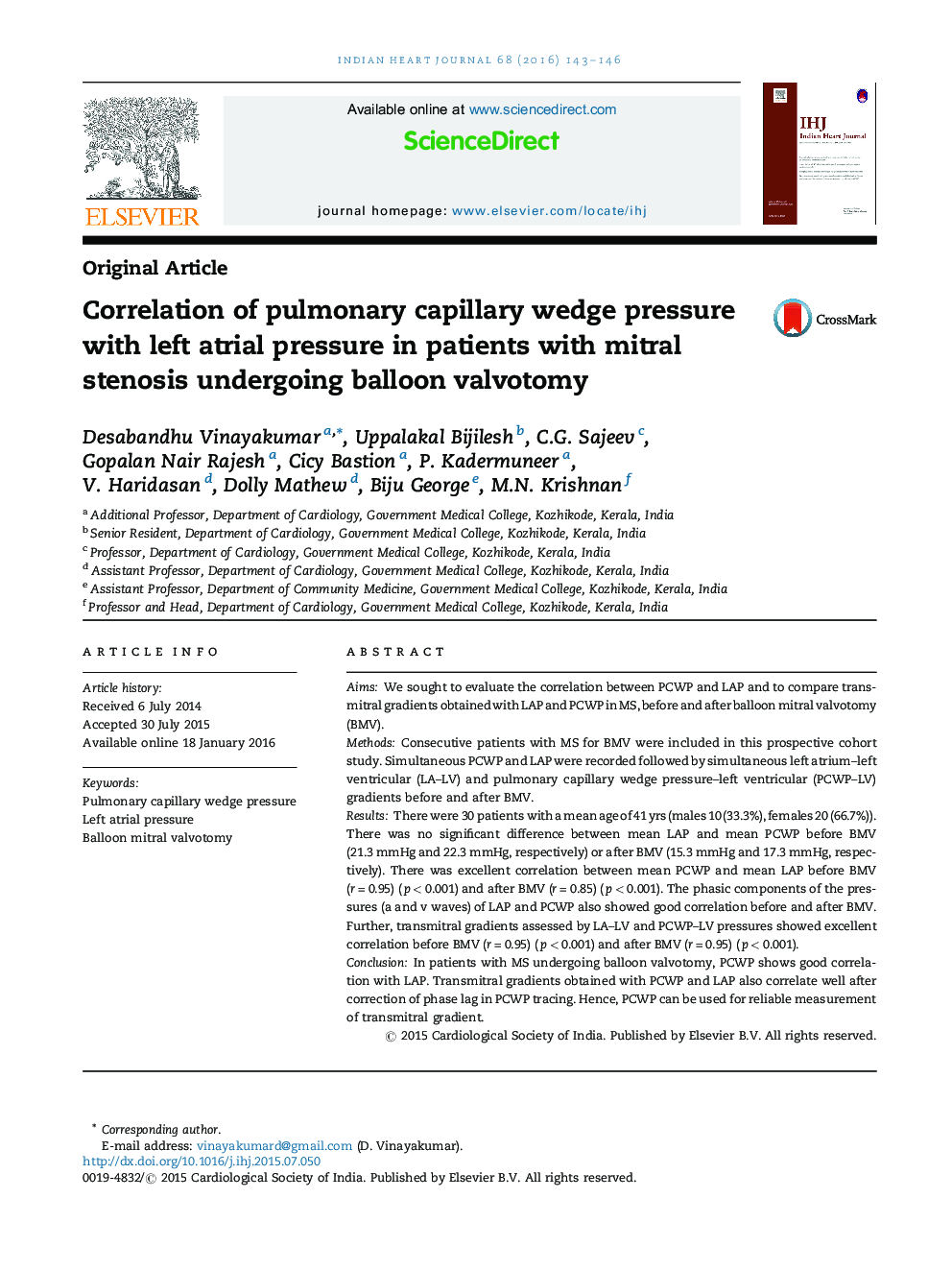| Article ID | Journal | Published Year | Pages | File Type |
|---|---|---|---|---|
| 2927344 | Indian Heart Journal | 2016 | 4 Pages |
AimsWe sought to evaluate the correlation between PCWP and LAP and to compare transmitral gradients obtained with LAP and PCWP in MS, before and after balloon mitral valvotomy (BMV).MethodsConsecutive patients with MS for BMV were included in this prospective cohort study. Simultaneous PCWP and LAP were recorded followed by simultaneous left atrium–left ventricular (LA–LV) and pulmonary capillary wedge pressure–left ventricular (PCWP–LV) gradients before and after BMV.ResultsThere were 30 patients with a mean age of 41 yrs (males 10 (33.3%), females 20 (66.7%)). There was no significant difference between mean LAP and mean PCWP before BMV (21.3 mmHg and 22.3 mmHg, respectively) or after BMV (15.3 mmHg and 17.3 mmHg, respectively). There was excellent correlation between mean PCWP and mean LAP before BMV (r = 0.95) (p < 0.001) and after BMV (r = 0.85) (p < 0.001). The phasic components of the pressures (a and v waves) of LAP and PCWP also showed good correlation before and after BMV. Further, transmitral gradients assessed by LA–LV and PCWP–LV pressures showed excellent correlation before BMV (r = 0.95) (p < 0.001) and after BMV (r = 0.95) (p < 0.001).ConclusionIn patients with MS undergoing balloon valvotomy, PCWP shows good correlation with LAP. Transmitral gradients obtained with PCWP and LAP also correlate well after correction of phase lag in PCWP tracing. Hence, PCWP can be used for reliable measurement of transmitral gradient.
